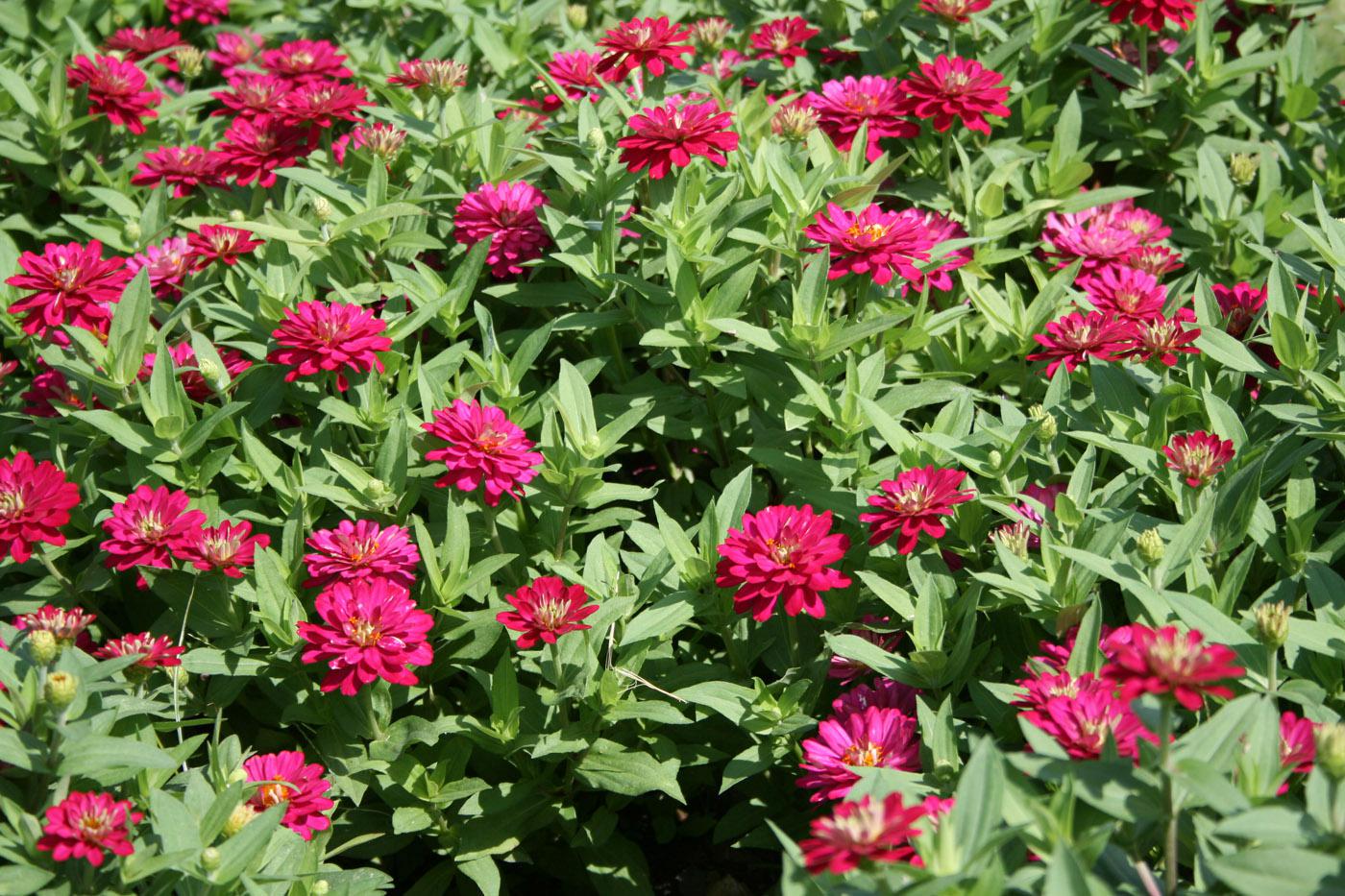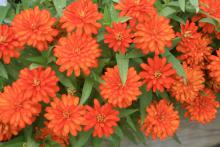Information Possibly Outdated
The information presented on this page was originally released on May 10, 2011. It may not be outdated, but please search our site for more current information. If you plan to quote or reference this information in a publication, please check with the Extension specialist or author before proceeding.
Plant Zahara zinnia for long-lasting color
Gardeners interested in plants that can provide dependable color in the heat and drought of summer should consider adding the annual Zahara zinnia to the landscape. These flowers tolerate drought and are very resistant to the powdery mildew that plagues other zinnia varieties.
The selections in the Zahara series are well-branched and will grow up to 18 inches tall and wide. Its plentiful branches help support its abundant flowering. Their best performance is in the full sun with good fertility and cooler night temperatures.
Zahara zinnias come in a wide range of colors, from white to coral rose. New colors this year include yellow and scarlet. One of my favorites is Starlight Rose. This selection has white petals with a splash of variable-colored deep rose shining from the center.
While all the selections are beautiful, perhaps the most exciting are the double flower selections. Double Cherry has deep magenta blooms, while Double Fire is a hot, scarlet orange. Both of these double Zaharas have centers that lighten as the flowers mature.
Zahara zinnia, known botanically as Zinnia marylandica, should be planted in the landscape in full sun. A key feature of these plants is that the flower color does not bleach out when grown in bright sunlight.
Amend the planting bed by working in 3 to 4 inches of a good quality compost to create well-drained soil with good fertility. In many parts of Mississippi, planting in bermed or raised beds results in superior plant growth and flowering all summer long.
Add 2 to 3 inches of mulch after planting to help cool the soil and preserve precious moisture. Even though Zahara zinnia are tolerant of dry conditions, water them during periods of extreme drought to maintain health, vigor and, most importantly, flower production. Avoid using overhead irrigation. Soaker hoses or some other type of drip system is a better, more efficient way to maintain soil moisture.
Zahara zinnia are also suited for container gardening. Plant in a peat-based potting media and monitor moisture, as containers dry out much more quickly than in-ground landscape beds.
Sprinkle a couple of tablespoons of slow-release fertilizer around each plant at transplant. At midseason, reapply or use water-soluble fertilizer every couple of weeks during the season.
Zahara zinnias are low-maintenance, flowering bedding plants. Transplanted on 12-inch centers in the landscape, Zahara zinnia will fill in quickly to provide a blanket of color. And one of the best features of these plants is that deadheading is seldom necessary.
So plant Zahara zinnia to fill your landscape with season-long color.









